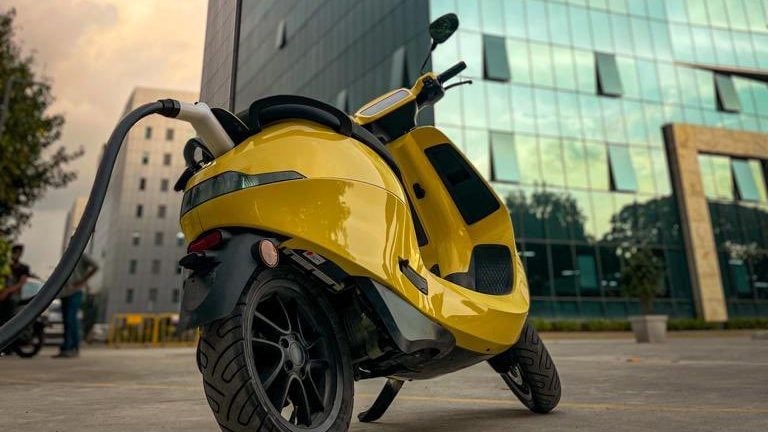Where are India’s electric-vehicle charging stations?
India’s electric revolution is in dire need of more power.


India’s electric revolution is in dire need of more power.
Estimates by Grant Thornton Bharat and the Federation of Indian Chambers of Commerce & Industry suggest India will need more than 400,000 charging stations for the 2 million-plus electric vehicles that could be on its roads by 2026. As of Dec. 16, there were only 1,028 public electric vehicle (EV) chargers installed throughout the country, energy minister RK Singh wrote in response (pdf) to a Lok Sabha question.
But there are thousands more planned, installed by governments and private companies.
The Indian government’s grand EV charging plans
The government is making space to scale up. In 2019, it ordered all gas stations to install a supply of at least one new-generation fuel, such as compressed natural gas (CNG), biofuels, liquefied natural gas (LNG), and electric vehicle charging points.
In March 2021, the government directed all commercial and institutional buildings—shopping malls, hospitals, hotels, offices, educational institutions, movie theaters, etc—with a parking capacity of more than 100 vehicles to set aside 5% of their parking spaces for EV charging (pdf).
The national highways authority is adding an EV charging station for every 40-60 km of national highways. India’s largest government-run oil firm is setting up 10,000 EV chargers in the next three years. Specific states like Karnataka are dedicating budget and resources to set up chargers as well.
Ola, Tata, and others install EV chargers
Meanwhile, the private sector is stepping up to the challenge, too.
On Dec. 28, Bhavish Aggarwal, CEO of Ola—which recently launched electric scooters—announced that the company is installing more than 4,000 hyperchargers at government-owned Bharat Petroleum Corporation Limited (BPCL) pumps, as well as in residential complexes across India throughout 2022. These charging points will be operational by the end of February, and will be free for use until the end of June for thousands of Ola e-scooter buyers, he said.
Tata Power has established a network of 1,000 chargers across the nation; Mumbai-based startup Magenta has begun installing streetlamp-integrated EV charging stations at railway stations, and is targeting a total of 4,500 chargers across petrol stations, hotels, and residences throughout the country; and Ather Energy is looking to set up chargers in 500 locations by March.
Where do you charge your electric car or scooter in India?
For now, the distribution of existing chargers is wildly unequal, with the majority in the big cities.
Delhi has 12 times as many electric chargers as the whole of India’s largest state (Rajasthan), according to data shared by Singh. But it makes sense when you consider that EV sales in Delhi are six times the national average.
The national capital has emerged as India’s EV capital because of a comprehensive policy that encouraged both demand and ecosystem development. The city-union territory gave EV buyers a subsidy of 10,000 rupees ($135) per kilowatt hour battery capacity, up to a total of Rs1.5 lakh ($2,017). However, it did withdraw its subsidy earlier this month, the impact of which remains to be seen.
The future of electric vehicles in India
EV adoption across India has been sluggish. Prices are high, the battery supply chain is dependent on imports, and there is a dearth of charging infrastructure. India’s largest car maker, Maruti, isn’t even making electric cars yet. Tesla’s superchargers have been spotted in India, but the cars are still three years later than expected with no launch date in sight.
Transport minister Nitin Gadkari rolled back the impossible target of having only EVs on Indian roads by the end of 2030. Now the aim is to make 30% of private cars, 70% of commercial vehicles, 40% of buses, and 80% of two and three-wheelers go electric by the end of the decade.
Given all the speed bumps, the chequered flag for India’s electric dreams is still a few laps away.